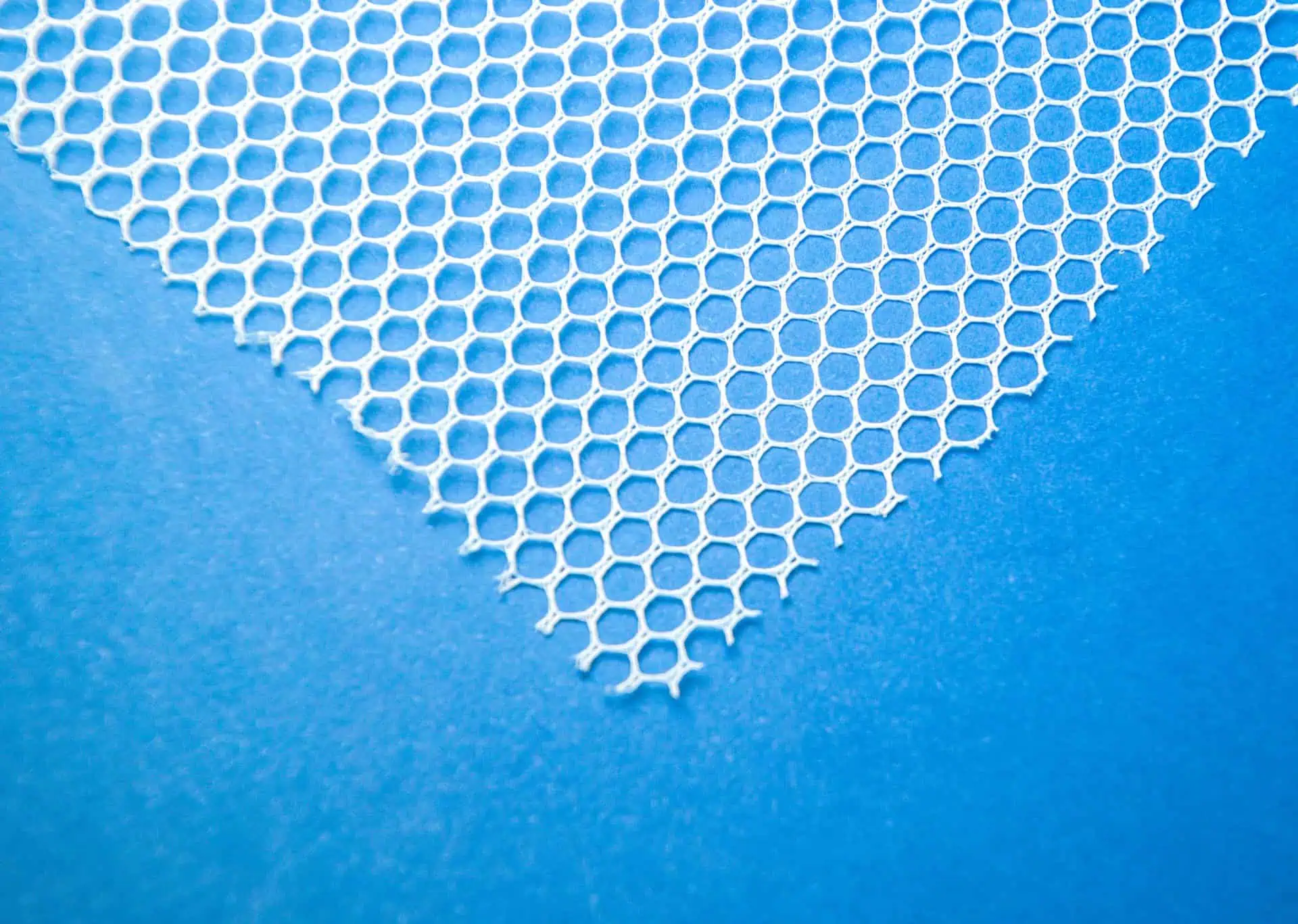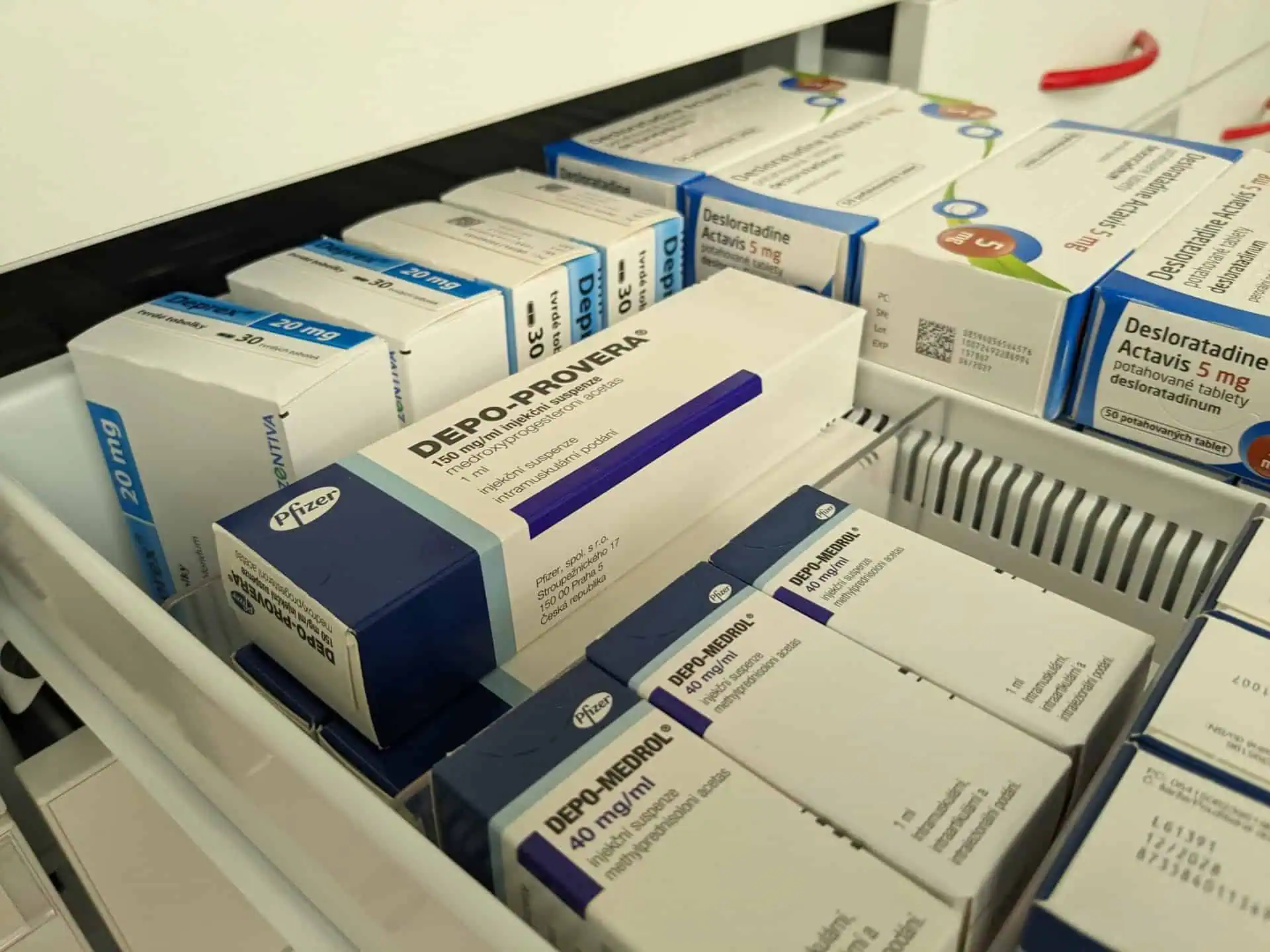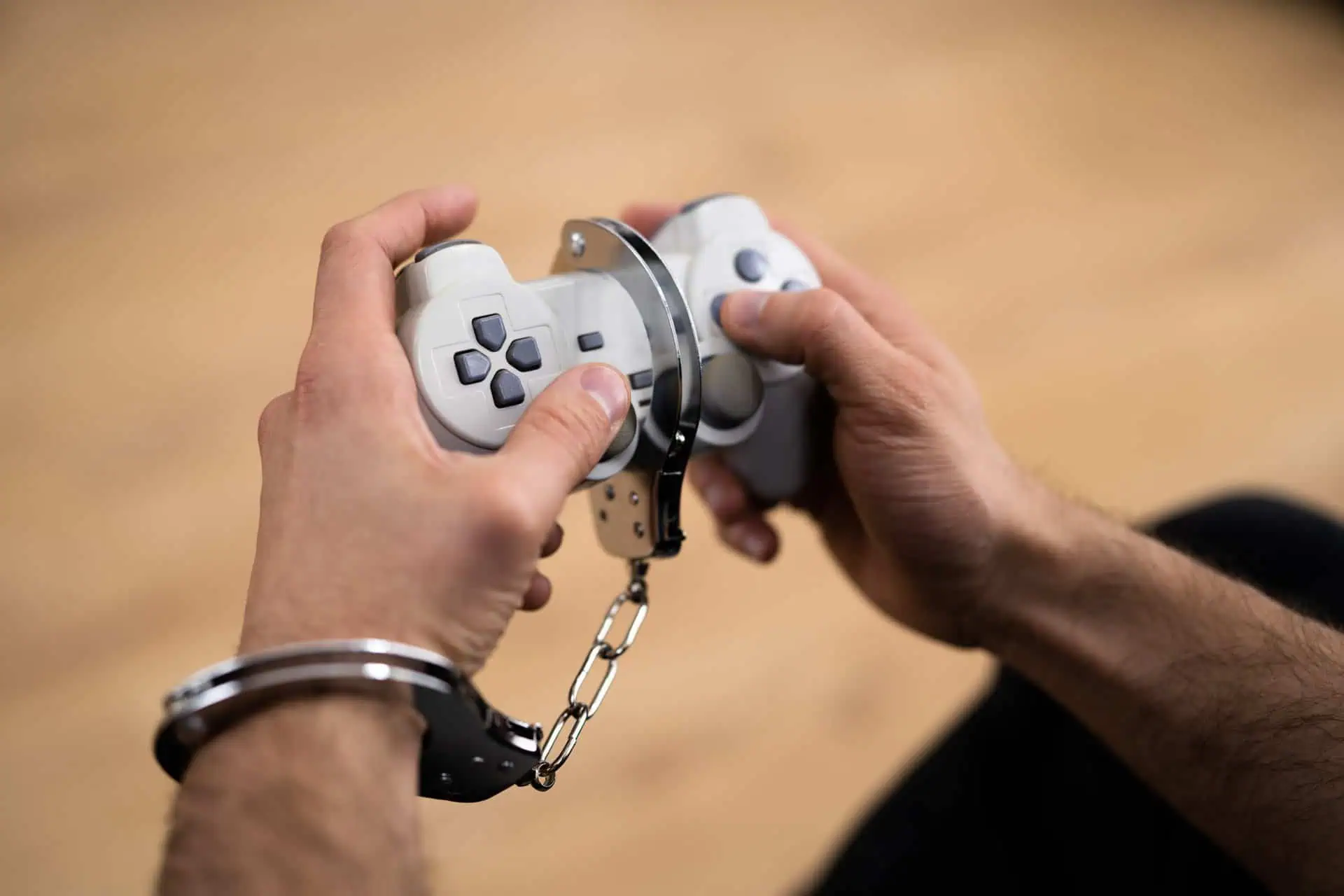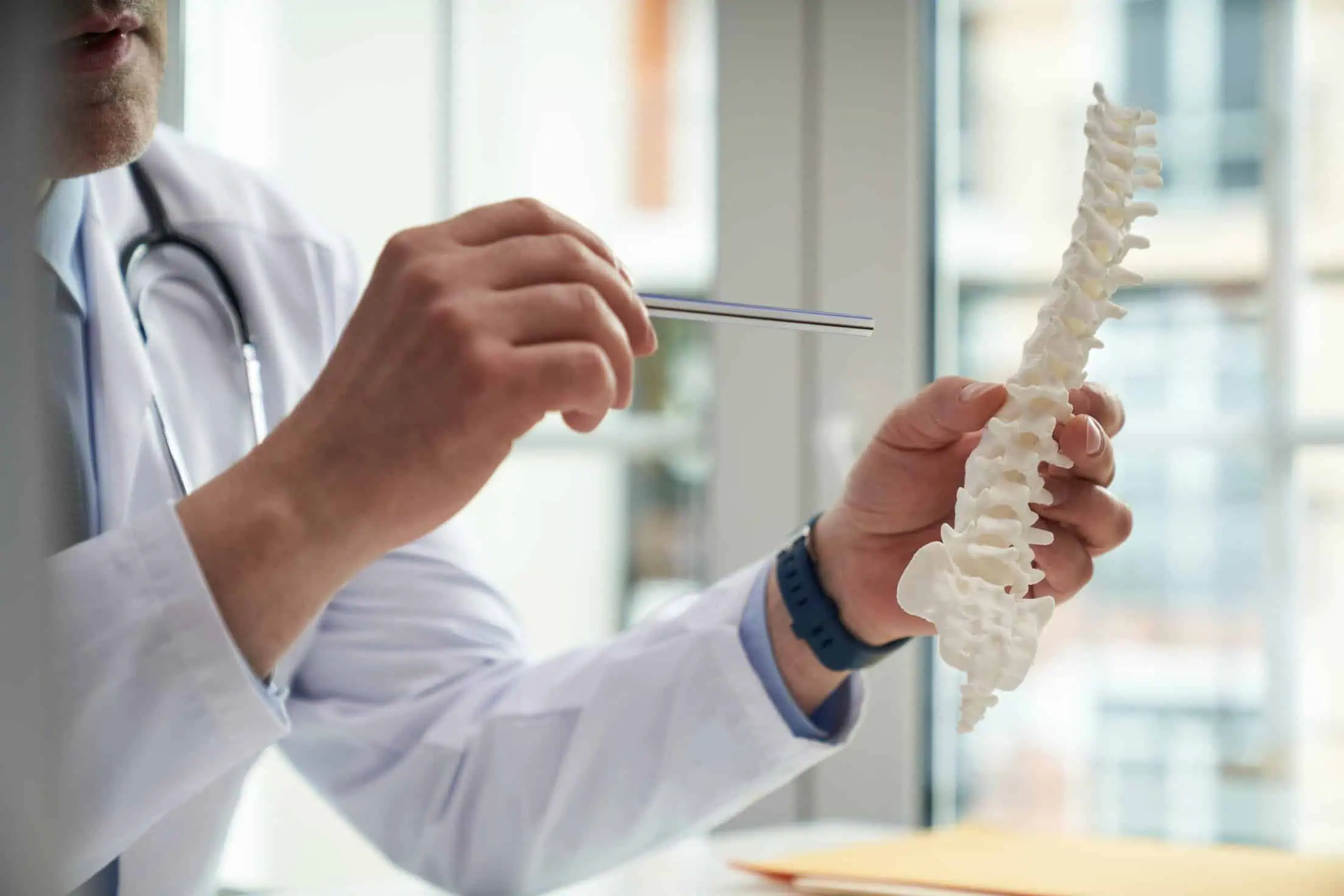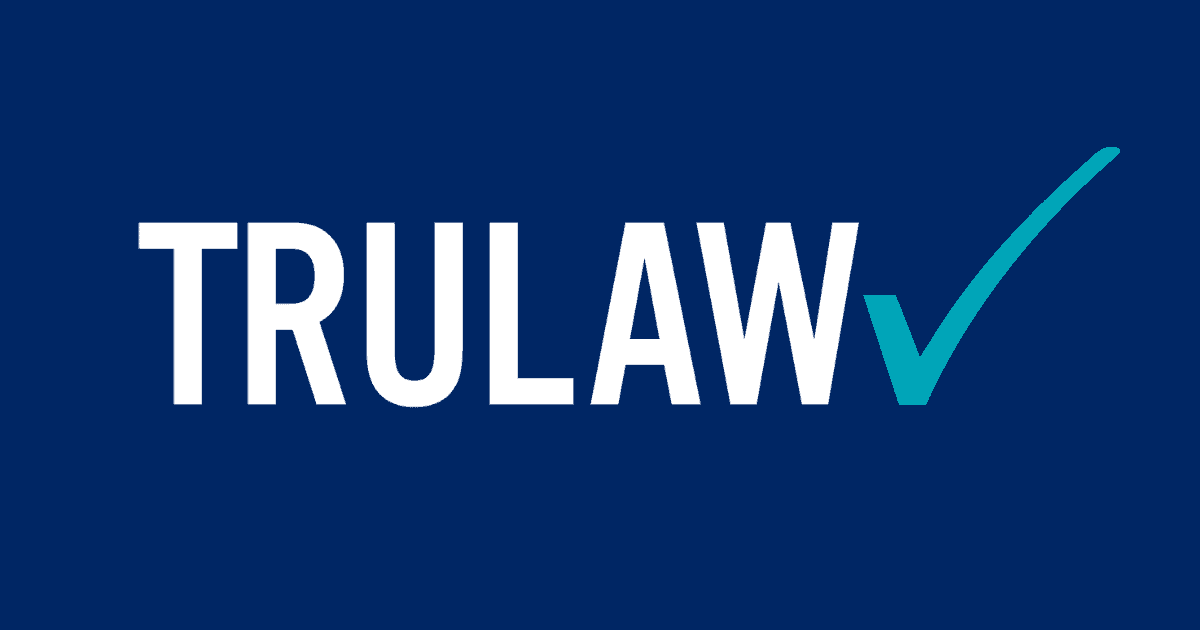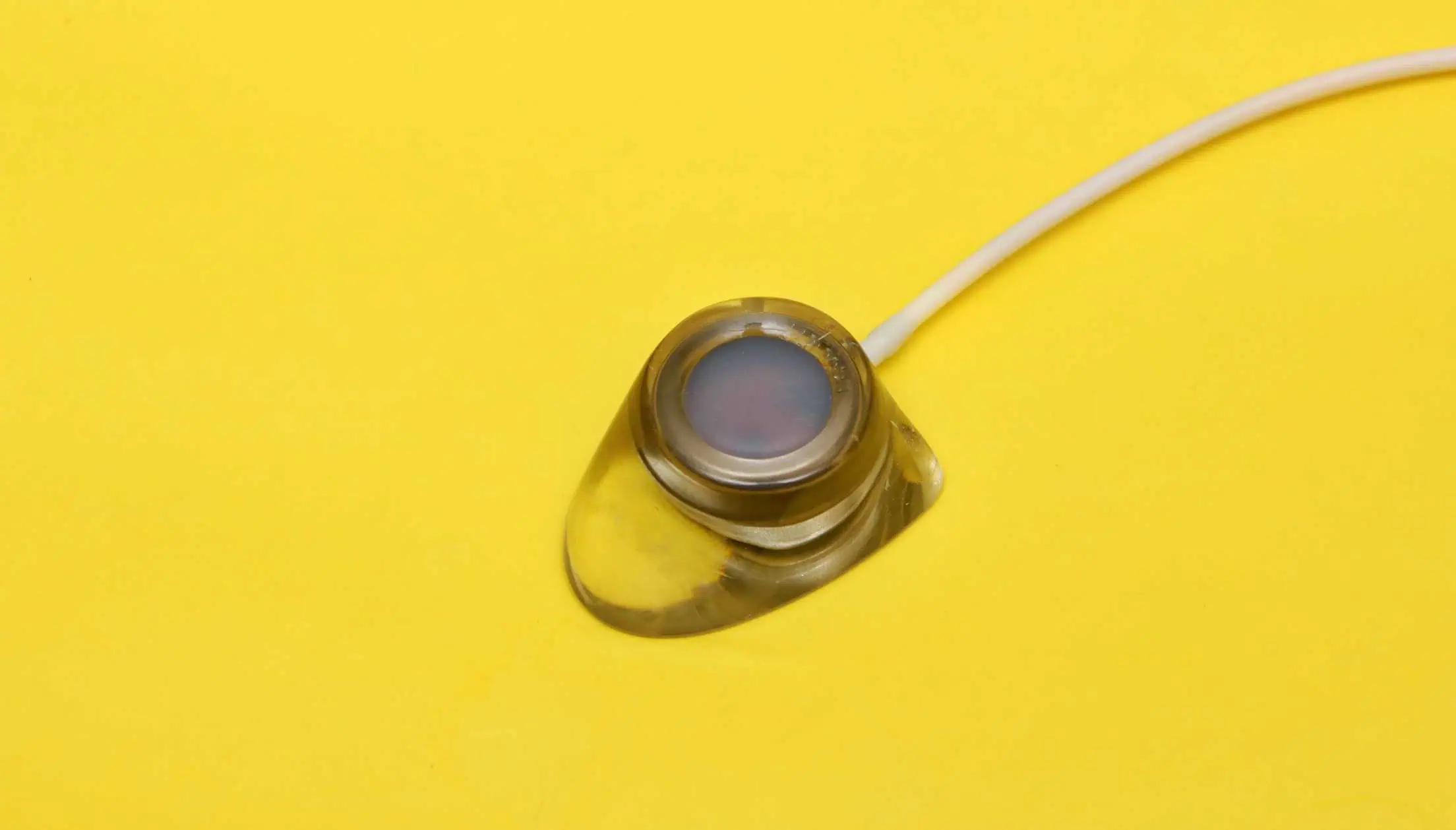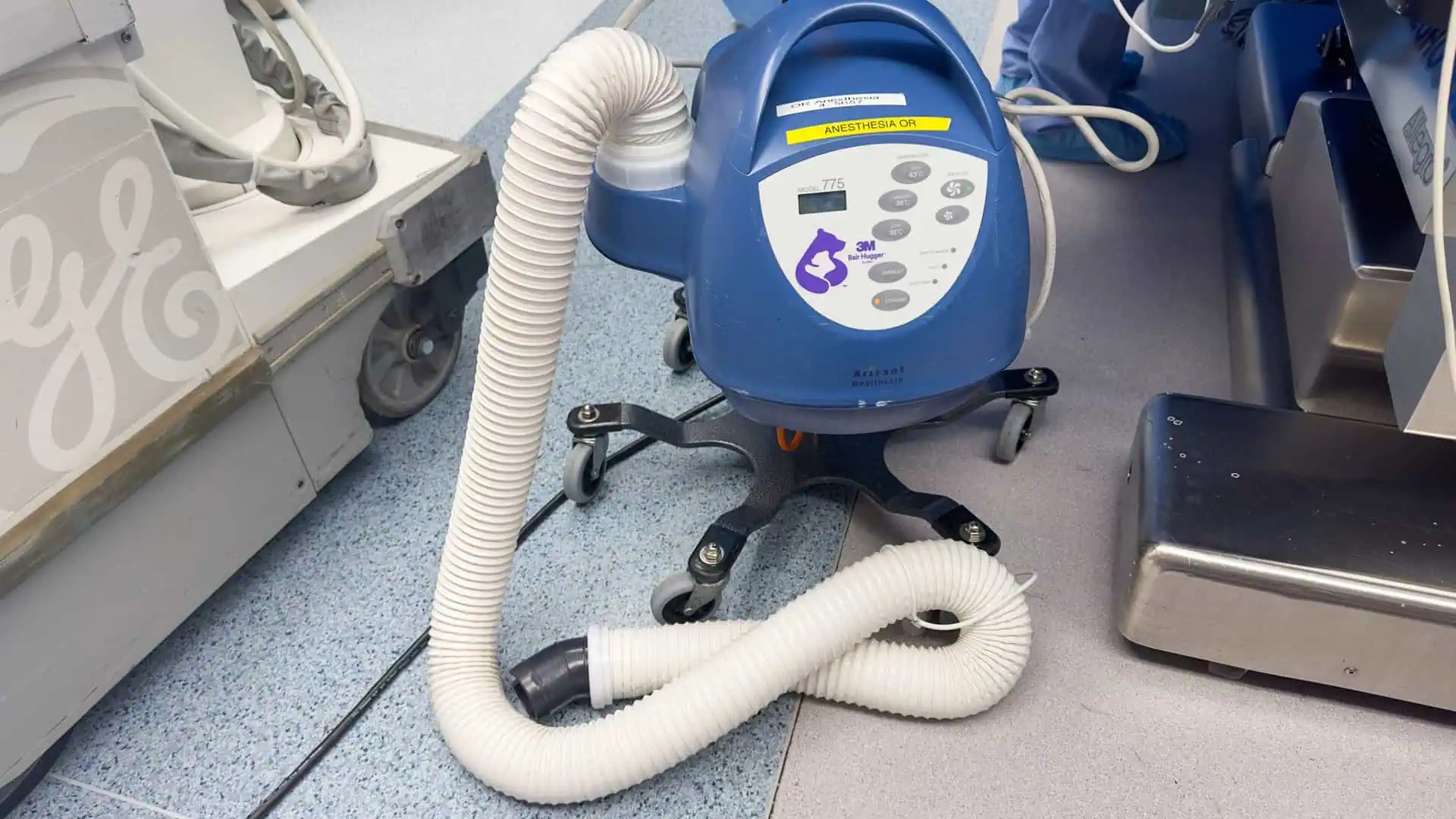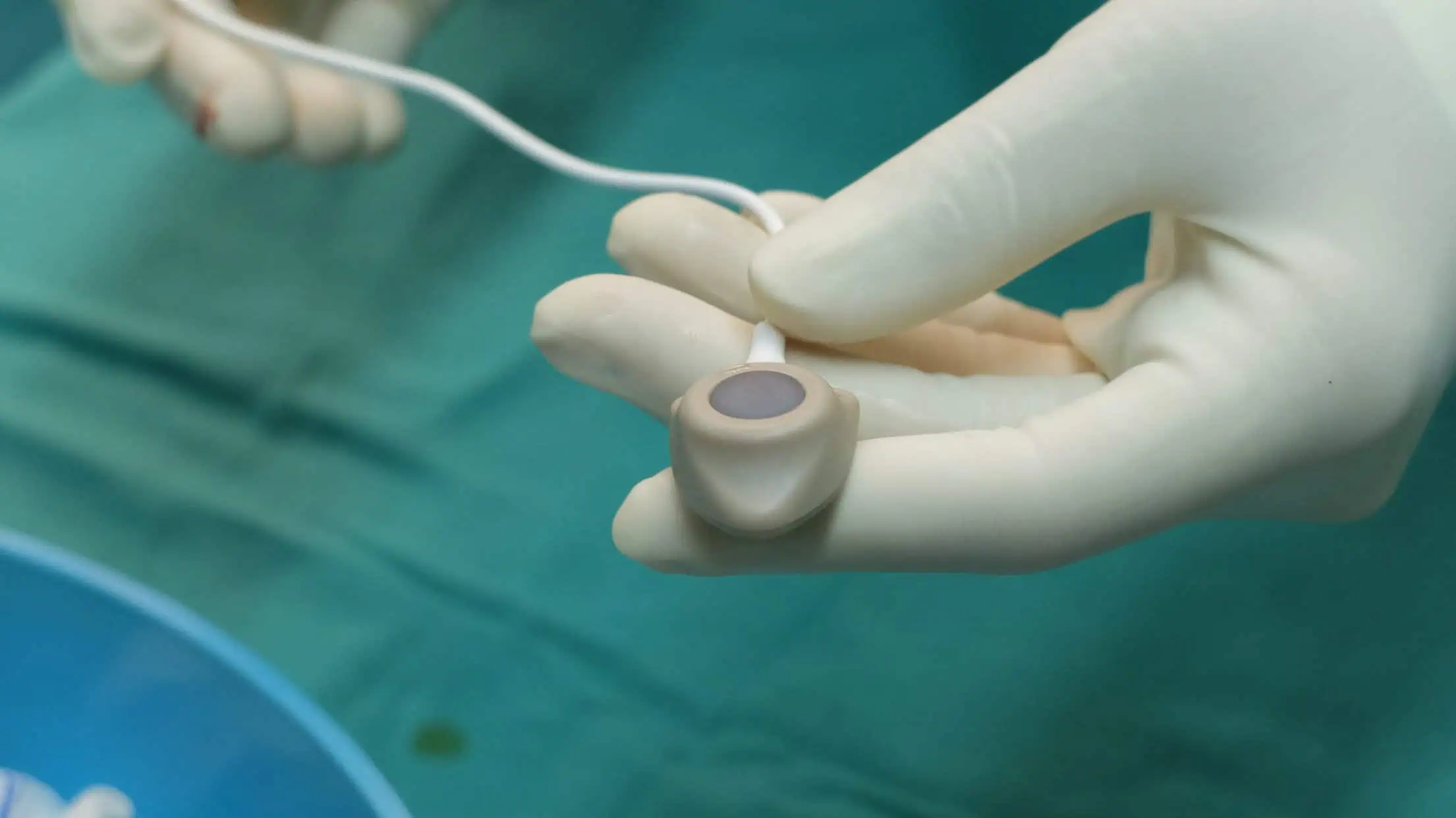Paragard Lawsuit | Paragard IUD Lawsuits
- Last Updated: June 23rd, 2025

Attorney Jessica Paluch-Hoerman, founder of TruLaw, has over 28 years of experience as a personal injury and mass tort attorney, and previously worked as an international tax attorney at Deloitte. Jessie collaborates with attorneys nationwide — enabling her to share reliable, up-to-date legal information with our readers.
Legally Reviewed
This article has been written and reviewed for legal accuracy and clarity by the team of writers and legal experts at TruLaw and is as accurate as possible. This content should not be taken as legal advice from an attorney. If you would like to learn more about our owner and experienced injury lawyer, Jessie Paluch, you can do so here.
Fact-Checked
TruLaw does everything possible to make sure the information in this article is up to date and accurate. If you need specific legal advice about your case, contact us by using the chat on the bottom of this page. This article should not be taken as advice from an attorney.
Paragard lawsuits filed for women experiencing a break in the Paragard IUD birth control device during removal causing painful complications and removal surgery.
The Teva Paragard IUD birth control device has been linked to a defect which can cause the device to break during removal and embed in the uterus requiring a painful removal surgery.
Currently there are two FDA approved IUDs available in the U.S. today – the copper T-380A (Paragard) and the levonorgestrel intrauterine system (Mirena).
Both are now subjects of support groups and lawsuits filed by women that believe they should be removed from the market.

Although IUDs are the most widely used method of reversible contraception in the world today, women in the U.S. use them at smaller rates because of negative repercussions that started with the Dalkon Shield in the 1970’s.
The Dalkon Shield hit the market in the late 1960s and early 1970s and became known as a “veritable instrument of torture.”
The public learned very quickly that the Shield was not effective at birth control and it was dangerous.
The string that was supposed to be used in removal of the medical device deteriorated inside women’s bodies resulting in infections, sometimes deadly.
Although many argue that current medical devices face more regulation since the Dalkon Shield came to market prior to the regulation of medical devices in 1976.
This is simply not true.
Many medical devices on the market today, including Paragard, were able to avoid extensive clinical testing because they were grandfathered in through the 510(k) Clearance process.
The FDA 510(k) clearance process “lacks the legal basis to be a reliable premarket screen of safety and effectiveness” according to the Institute of Medicine (IOM).
Although IOM was appointed by the FDA in 2011 to tackle the important issue of patient safety, the recommendations that resulted have not been acted upon in any substantial way by the FDA.
For this reason, women must receive full information about the risks an IUD carries before they make important health decisions.
Table of Contents
Lawsuit Updates
-
June 2025 Updates:
June 20th, 2025: Delaware Plaintiff Joins Paragard MDL After IUD Breakage Requires Surgical Removal
A Delaware woman has filed a new claim in the ongoing Paragard multidistrict litigation (MDL No. 2974), alleging that the Paragard IUD fractured during removal and required surgical intervention.
Filed on June 17 in the U.S. District Court for the Northern District of Georgia, the lawsuit names multiple defendants, including Teva Pharmaceuticals USA, Teva Women’s Health, Teva Branded Pharmaceutical Products R&D, The Cooper Companies, and CooperSurgical.
The plaintiff received the Paragard IUD in May 2014. Removal was attempted in early 2021, but the device broke, with one arm left inside her body.
Imaging located the retained fragment, and she underwent a hysteroscopy to extract it. She also reported experiencing heavy menstrual bleeding.
This case adds to hundreds of similar claims pending in the Paragard MDL, which allege that the copper IUD is defectively designed and prone to breakage, often leading to invasive procedures.
Plaintiffs who have undergone surgeries, including hysterectomies, may be eligible for higher compensation due to long-term complications.
June 12th, 2025: Plaintiffs Granted Follow-Up Deposition in Paragard MDL Over IPS Audit
In the ongoing Paragard multidistrict litigation, U.S. District Judge Leigh Martin May has sided with plaintiffs in a discovery dispute, allowing them to resume questioning of corporate representative William Senatore.
The court approved an additional two hours of deposition time specifically focused on a 2023 audit conducted by Inspection Preparedness Services (IPS).
Defendants had sought to block further inquiry into the audit, asserting it was protected by legal privilege but failed to provide a detailed explanation or supporting evidence.
Judge May rejected that argument, determining the audit is directly relevant to modifications implemented at the Paragard manufacturing facility.
The supplemental deposition must take place within ten days of the ruling.
June 9th, 2025: Paragard Bellwether Trials Scheduled for 2026 Amid Growing Litigation
The first three bellwether trials in the Paragard IUD multidistrict litigation (MDL No. 2974) are scheduled to begin in early 2026, as the number of pending cases exceeds 3,300. U.S. District Judge Leigh Martin May, overseeing the proceedings in the Northern District of Georgia, has set trial dates for January 20, March 3, and May 11.
Plaintiffs allege that the Paragard copper intrauterine device, manufactured by Teva Pharmaceuticals and CooperSurgical, is defectively designed and prone to breaking during removal—often necessitating surgical intervention.
They also claim the companies failed to provide adequate warnings to patients and healthcare professionals about these risks.
The first bellwether case, Braxton v. Teva, was selected by the defense and involves a Florida woman whose IUD fractured during a 2019 removal procedure, resulting in further medical treatment.
Bellwether trials aim to assess how juries might respond to core evidence and legal arguments, potentially influencing future settlement discussions.
Despite thousands of reported adverse events, the FDA has not issued a recall for the Paragard IUD.
Pretrial proceedings remain underway, including expert discovery and Daubert motions that will determine the scope of expert testimony allowed at trial.
June 2nd, 2025: June 2025 JPML Update
The Paragard multidistrict litigation (MDL) grew by 78 new cases between May and June, bringing the total number of Paragard lawsuits filed in federal court to 3,330.
Plaintiffs continue to claim that the Paragard IUD has a tendency to break during removal, leaving plastic fragments in the uterus and often requiring surgical procedures to retrieve them.
Recent case filings describe instances where imaging initially failed to detect the broken arms of the device, with patients later experiencing pain, bleeding, or fertility issues.
Attorneys are working to strengthen cases involving emergency procedures such as dilation and curettage (D&C), hysteroscopy, and laparoscopy following IUD breakage.
Debates over expert testimony regarding alleged design defects are ongoing as key discovery deadlines approach.
TruLaw and its attorneys are investigating Paraquat lawsuits now.
If you or a loved one has subsequently been diagnosed with Parkinson’s Disease after exposure to the herbicide, you may be entitled to recover money for pain and suffering, medical expenses, and lost wages.
You can speak with our virtual assistant by clicking on the chat icon found at the bottom right hand of the page.
-
May 2025 Updates:
May 19, 2025: First Bellwether Trial Selected in MDL
The U.S. District Court overseeing the Paragard IUD multidistrict litigation (MDL) has selected the first case for bellwether trial, set to begin in January 2026.
This lawsuit involves allegations that the Paragard IUD fractured during removal, resulting in emergency surgery and permanent physical harm.
The plaintiff claims the device’s breakage caused lasting injuries, including reproductive impairment and disfigurement.
The case is one of more than 3,200 Paragard IUD lawsuits filed in federal court, each asserting that the birth control device’s plastic arms are prone to snapping during removal.
Plaintiffs argue that Teva Pharmaceuticals, the manufacturer, failed to adequately warn users about the risk of breakage and marketed a product with a dangerously defective design.
These claims have been consolidated in the Northern District of Georgia under U.S. District Judge Leigh Martin May for coordinated pretrial proceedings.
Judge May has scheduled three bellwether trials to test common issues in front of juries.
While verdicts in these cases will not set binding precedent, they are expected to shape the direction of future Paragard IUD settlement discussions.
May 1st, 2025: May 2025 JPML Update
The Paragard IUD Lawsuit continues to grow as more women come forward with claims of serious complications caused by the birth control device.
These lawsuits allege that Paragard can fracture during removal, leading to internal injuries, infertility, and, in many cases, the need for surgery.
Plaintiffs argue that the manufacturer failed to properly warn patients and medical professionals about the risks involved.
In April 2025, 216 new cases were added to the Paragard IUD multidistrict litigation (MDL), bringing the total increase for the year to 370 filings since January 1.
This steady rise highlights growing public awareness about the potential dangers linked to the device.
As the litigation progresses, women affected by Paragard removals continue to seek accountability and compensation for their injuries.
TruLaw and its attorneys are investigating Paraquat lawsuits now.
If you or a loved one has subsequently been diagnosed with Parkinson’s Disease after exposure to the herbicide, you may be entitled to recover money for pain and suffering, medical expenses, and lost wages.
You can speak with our virtual assistant by clicking on the chat icon found at the bottom right hand of the page.
-
April 2025 Updates:
April 15th, 2025: Syngenta Moves to Settle Thousands of Paraquat Parkinson’s Disease Lawsuits
Syngenta has reached a settlement agreement to resolve a significant portion of the lawsuits filed against it over claims that its paraquat-based herbicide causes Parkinson’s disease.
The settlement was disclosed in a court filing this week and confirmed during a federal hearing, with lead plaintiffs’ attorneys indicating that the final terms should be agreed upon within 30 days.
As of mid-April, more than 5,800 lawsuits were consolidated in a federal multidistrict litigation (MDL) in Illinois, with additional cases pending in state courts like California.
While the settlement will not cover all cases, it is expected to resolve a substantial number of claims from individuals exposed to paraquat.
Syngenta asserts that paraquat is safe and denies any wrongdoing, pointing to decades of research and over 1,200 scientific studies that have not conclusively linked paraquat to Parkinson’s disease.
However, the company acknowledged that ongoing litigation is costly and distracting.
Attorneys representing clients outside the MDL have expressed frustration at being excluded from settlement discussions and warned that the agreement could complicate or delay their cases.
There are concerns about transparency and whether the settlement terms will provide meaningful relief to all plaintiffs.
This development comes as lawmakers and public health advocates push for stricter regulations or a full ban on paraquat, citing growing scientific evidence and internal documents suggesting that Syngenta was aware of the neurological risks for years.
The settlement is being closely monitored, not only for its potential to resolve thousands of claims but also for its broader implications on future chemical safety litigation.
If you or a loved one used a Paragard IUD and subsequently suffered complications and/or injuries, you may qualify for a Paragard lawsuit.
Contact TruLaw to speak with an experienced Paragard Lawyer about your legal options today.
Use our chatbot on this page to find out if you qualify for a Paragard IUD Lawsuit instantly.
April 1st, 2025: April 2025 JPML Update
The Paragard IUD Lawsuit continues to grow, with a modest increase in filings reported between March and April 2025.
As of March, there were 2,965 Paragard lawsuits pending.
By April 1, the Judicial Panel on Multidistrict Litigation (JPML) confirmed that the total had climbed to 3,036—an increase of 71 new cases.
This rise reflects the ongoing efforts of individuals who allege they suffered injuries due to the copper-based birth control device.
Common claims include device breakage, migration, and complications during removal, often requiring emergency surgery.
As more affected users come forward, the litigation continues to build momentum.
The lawsuits remain consolidated in federal multidistrict litigation as plaintiffs pursue compensation for the harm they’ve experienced.
If you or a loved one used a Paragard IUD and subsequently suffered complications and/or injuries, you may qualify for a Paragard lawsuit.
Contact TruLaw to speak with an experienced Paragard Lawyer about your legal options today.
Use our chatbot on this page to find out if you qualify for a Paragard IUD Lawsuit instantly.
-
March 2025 Updates:
March 3rd, 2025: Paragard IUD MDL Grows by 28
The Paragard IUD lawsuit involves claims that the birth control device has caused complications, including breakage during removal, leading to injuries and the need for surgical intervention.
Plaintiffs allege that the manufacturer failed to adequately warn users about these risks.
In February, 2,937 cases were filed, increasing to 2,965 in March with 28 new claims.
This increase reflects ongoing legal action from individuals who have experienced complications related to the Paragard IUD.
Breakage during removal can lead to serious injuries, requiring surgery and causing long-term health issues for those affected.
If you or a loved one used a Paragard IUD and subsequently suffered complications and/or injuries, you may qualify for a Paragard lawsuit.
Contact TruLaw to speak with an experienced Paragard Lawyer about your legal options today.
Use our chatbot on this page to find out if you qualify for a Paragard IUD Lawsuit instantly.
-
February 2025 Updates:
February 19th, 2025: Paragard IUD Bellwether Trials Scheduled for 2026 After Delays
The first Paragard IUD bellwether trials are set to begin in January 2026, marking a critical phase in the ongoing litigation.
The first trial will commence on January 12, 2026, followed by additional trials on March 3 and May 11, 2026.
These trials will serve as key test cases, helping to gauge how juries may respond to the thousands of similar lawsuits currently pending in federal court.
Nearly 3,000 lawsuits have been filed by women who claim the Paragard IUD, a copper-based birth control device, can fracture during removal, leading to severe complications, emergency surgeries, and long-term injuries.
The cases have been consolidated in multidistrict litigation (MDL) before Judge Leigh Martin May in the Northern District of Georgia.
The updated trial schedule follows a recent ruling that dismissed around 100 claims due to state statute of limitations laws, while allowing approximately 100 other cases to move forward.
Despite these dismissals, Paragard manufacturers continue to face thousands of lawsuits over the risks associated with the device.
While the bellwether trials will not set a legal precedent for other cases, their outcomes could significantly influence Paragard IUD settlements and may lead to a broader resolution, reducing the need for individual trials nationwide.
If you or a loved one used a Paragard IUD and subsequently suffered complications and/or injuries, you may qualify for a Paragard lawsuit.
Contact TruLaw to speak with an experienced Paragard Lawyer about your legal options today.
Use our chatbot on this page to find out if you qualify for a Paragard IUD Lawsuit instantly.
February 3rd, 2025: Paragard IUD lawsuit adds 55 cases
In February 2025, the number of Paragard cases rose to 2,937, up from 2,882 pending cases in the MDL reported in January 2025.
This increase of 55 new filings highlights the continued concerns surrounding the Paragard intrauterine device (IUD) and its associated risks, prompting more individuals to seek legal action.
The Paragard MDL remains focused on addressing claims of serious injuries linked to the device, with many plaintiffs alleging complications such as uterine perforation and device migration.
If you or a loved one used a Paragard IUD and subsequently suffered complications and/or injuries, you may qualify for a Paragard lawsuit.
Contact TruLaw to speak with an experienced Paragard Lawyer about your legal options today.
Use our chatbot on this page to find out if you qualify for a Paragard IUD Lawsuit instantly.
-
January 2025 Updates:
The number of Paragard Lawsuits pending in the MDL has risen from 2,862 in December to 2,882 in January 2025, reflecting an increase of 20 new cases.
This increase in case filings signals a continued surge in legal actions related to the defective Paragard IUD, a device linked to severe health issues, including device breakage, pelvic pain, and uterine injury.
The rise in cases indicates that awareness is growing and individuals who have experienced adverse effects from the Paragard IUD are continuing to take legal action.
The ongoing increase in Paragard Lawsuits underscores rising concerns about the device’s safety and the need for legal accountability from its manufacturer.
If you or a loved one used a Paragard IUD and subsequently suffered complications and/or injuries, you may qualify for a Paragard lawsuit.
Contact TruLaw to speak with an experienced Paragard Lawyer about your legal options today.
Use our chatbot on this page to find out if you qualify for a Paragard IUD Lawsuit instantly.
-
December 2024 Updates:
The Paragard IUD lawsuit centers on claims that the device, intended for birth control, has caused complications such as breakage during removal, resulting in injuries and the need for surgeries.
Plaintiffs argue that the manufacturer failed to adequately warn users about these risks.
In November, 2,824 cases were filed, rising to 2,862 in December with 38 additional claims.
Breakage during removal can lead to severe injuries, necessitating surgical intervention and causing considerable distress for affected individuals.
Litigation against Paragard’s maker is expected to increase, with plaintiffs seeking compensation for the injuries caused by the device.
If you or a loved one used a Paragard IUD and subsequently suffered complications and/or injuries, you may qualify for a Paragard lawsuit.
Contact TruLaw to speak with an experienced Paragard Lawyer about your legal options today.
Use our chatbot on this page to find out if you qualify for a Paragard IUD Lawsuit instantly.
-
November 2024 Updates:
November 14, 2024
The FDA has initiated a safety review of the Paragard IUD following a surge in reports of device breakage during removal.
Over 7,000 complaints, many categorized as serious, have been submitted to the FDA’s Adverse Event Reporting System.
These breakage incidents have resulted in anxiety, trauma, and, in some cases, surgeries to remove fragments, including hysterectomies.
The FDA’s review has uncovered significant gaps in understanding the causes of these breakages and raised concerns about the long-term risks posed when fragments are left in the uterus.
While the agency updated Paragard’s warning label in 2024 to advise caution during removal, it has not required healthcare provider notifications or additional risk assessments from the manufacturer, CooperSurgical.
Despite the updated labeling, CooperSurgical has not implemented new measures to address the rising complaints, instead attributing them to “stimulated reporting” linked to litigation.
Critics argue that more thorough testing and clearer safety guidelines are essential to reduce patient risks.
This situation underscores the need for greater transparency and proactive steps to ensure the safety of medical devices that are used by millions of women.
Litigation against Paragard’s maker is expected to increase, with plaintiffs seeking compensation for the injuries caused by the device.
If you or a loved one used a Paragard IUD and subsequently suffered complications and/or injuries, you may qualify for a Paragard lawsuit.
Contact TruLaw to speak with an experienced Paragard Lawyer about your legal options today.
Use our chatbot on this page to find out if you qualify for a Paragard IUD Lawsuit instantly.
November 4, 2024
The U.S. District Judge overseeing the Paragard IUD lawsuits has set the first bellwether trials for December 2025 and February 2026.
These cases involve claims that the Paragard IUD poses a risk of fracturing during removal.
Although initially scheduled for earlier dates, these trials have experienced multiple delays but are now positioned to proceed, providing insight into potential jury responses.
The Paragard IUD, a copper-wrapped plastic device used for long-term contraception, is marketed as a safe, removable option.
However, some women allege that the device fractured during removal, often leading to emergency surgery to extract broken pieces.
Over 2,800 lawsuits have been filed, asserting that the device is defectively designed and that manufacturers failed to warn of these risks.
In December 2020, federal Paragard lawsuits were consolidated in multidistrict litigation (MDL) under Judge Leigh Martin May in the Northern District of Georgia, facilitating coordinated discovery and pretrial proceedings.
Judge May initiated a bellwether process, selecting representative cases for early trials to gauge potential jury reactions to key evidence and expert testimonies.
While the bellwether trials won’t produce binding outcomes for other cases, they may influence settlement discussions and potentially lead to a global Paragard IUD settlement, reducing the need for numerous individual trials nationwide.
Initially expected to begin in early 2024, the first trial is now set for December 1, 2025, with the second scheduled for February 2, 2026, though this date may change based on defense counsel availability.
Litigation against Paragard’s maker is expected to increase, with plaintiffs seeking compensation for the injuries caused by the device.
If you or a loved one used a Paragard IUD and subsequently suffered complications and/or injuries, you may qualify for a Paragard lawsuit.
Contact TruLaw to speak with an experienced Paragard Lawyer about your legal options today.
November 1, 2024
The Paragard IUD lawsuit centers on claims that the intrauterine device (IUD) has caused serious complications, including device breakage during removal, resulting in injuries and the need for surgery.
Plaintiffs assert that the manufacturer did not sufficiently warn users about these risks, especially the potential for breakage.
In October, there were 2,747 Paragard IUD cases filed, which increased to 2,824 in November, adding 77 new filings.
This rise indicates that more individuals are becoming aware of the possible complications and their legal rights.
Breakage of the Paragard IUD during removal can lead to painful injuries and may require surgery, significantly impacting the health and well-being of those affected.
Litigation against Paragard’s maker is expected to increase, with plaintiffs seeking compensation for the injuries caused by the device.
If you or a loved one used a Paragard IUD and subsequently suffered complications and/or injuries, you may qualify for a Paragard lawsuit.
Contact TruLaw to speak with an experienced Paragard Lawyer about your legal options today.
Use our chatbot on this page to find out if you qualify for a Paragard IUD Lawsuit instantly.
-
October 2024 Updates:
October 23, 2024
The U.S. Food and Drug Administration (FDA) has recently concluded a three-year safety review into the breakage of the Paragard IUD, following increasing complaints from users and media attention.
Paragard, the only non-hormonal copper IUD approved in the U.S., has been the subject of numerous lawsuits from women who suffered severe complications when the device broke during removal, sometimes requiring surgery.
As of 2024, over 7,000 reports of Paragard breakage have been filed with the FDA, many of which were classified as serious and required hospitalization.
Some women have reported life-altering complications, including the need for hysterectomies or the permanent retention of broken IUD fragments in their bodies.
The FDA’s safety review, which concluded this year, led to an update in the device’s labeling to provide clearer guidance for clinicians on handling situations where the IUD is difficult to remove.
Paragard’s manufacturer, CooperSurgical, is facing a growing number of lawsuits from plaintiffs who claim they were not adequately warned about the risks of breakage.
Many affected women are calling for greater transparency and better warnings from both the company and healthcare providers.
Despite the FDA’s recent label updates, critics argue that more should be done to inform women about these potential risks.
Litigation against Paragard’s maker is expected to increase, with plaintiffs seeking compensation for the injuries caused by the device.
If you or a loved one used a Paragard IUD and subsequently suffered complications and/or injuries, you may qualify for a Paragard lawsuit.
Contact TruLaw to speak with an experienced Paragard Lawyer about your legal options today.
Use our chatbot on this page to find out if you qualify for a Paragard IUD Lawsuit instantly.
October 1, 2024
The Paragard IUD litigation centers on claims that the device, used for long-term birth control, is prone to break during removal, causing serious injuries.
Women affected by the defective Paragard IUD have filed lawsuits, alleging that the manufacturers failed to provide adequate warnings about the risk of breakage and the resulting complications.
In September, the Judicial Panel on Multidistrict Litigation (JPML) reported 2,793 active Paragard lawsuits.
By October, that number slightly decreased to 2,747, a drop of 46 cases.
Despite the reduction, the number of lawsuits remains substantial, reflecting ongoing concerns about the device’s safety.
Women who experienced broken Paragard IUDs during removal have reported injuries such as uterine perforation, infections, and the need for additional surgeries.
If you or a loved one used a Paragard IUD and subsequently suffered complications and/or injuries, you may qualify for a Paragard lawsuit.
Contact TruLaw to speak with an experienced Paragard Lawyer about your legal options today.
Use our chatbot on this page to find out if you qualify for a Paragard IUD Lawsuit instantly.
-
September 2024 Updates:
The Paragard IUD Lawsuit has seen a slight increase in filings, rising from 2,774 in August to 2,793 in September.
This steady growth reflects ongoing concerns about the safety of the Paragard intrauterine device (IUD).
The non-hormonal contraceptive has been linked to serious complications, particularly during removal, with some users reporting the device breaking or fracturing, causing severe pain, injury, and requiring additional surgeries.
As a result, numerous lawsuits have been filed against the manufacturer, accusing the company of failing to adequately warn patients and healthcare providers of the potential risks associated with the device.
If you or a loved one used a Paragard IUD and subsequently suffered complications and/or injuries, you may qualify for a Paragard lawsuit.
Contact TruLaw to speak with an experienced Paragard Lawyer about your legal options today.
Use our chatbot on this page to find out if you qualify for a Paragard IUD Lawsuit instantly.
-
August 2024 Updates:
August 19, 2024:
A significant Paragard Lawsuit trial is scheduled to begin in October 2024.
This trial could be a pivotal moment in the ongoing multidistrict litigation (MDL) concerning the Paragard intrauterine device (IUD), where plaintiffs allege that the device can break during removal, leading to severe complications.
While there is always the possibility that the trial date could be postponed, the litigation is reaching a critical stage where settlement discussions are likely to intensify.
The upcoming trial will focus on the extent of injuries sustained by plaintiffs due to the Paragard IUD, particularly cases where the device’s arm breaks off during removal.
The severity of injuries in these cases can vary widely.
In less severe cases, the broken fragment might be removed through relatively straightforward medical procedures.
However, more complicated scenarios may require advanced surgical interventions, such as hysteroscopy or laparoscopy, especially when the fragment migrates outside the uterus, posing risks of damage to nearby organs.
In extreme cases, if the fragment perforates the uterine wall or migrates into the abdominal cavity, more extensive surgical procedures might be necessary to retrieve the fragment, potentially leading to long-term complications such as chronic pain, infections, or infertility.
The defense has argued that most Paragard Lawsuits in the MDL do not involve permanent injuries.
If you or a loved one used a Paragard IUD and subsequently suffered complications and/or injuries, you may qualify for a Paragard lawsuit.
Contact TruLaw to speak with an experienced Paragard Lawyer about your legal options today.
Use our chatbot on this page to find out if you qualify for a Paragard IUD Lawsuit instantly.
August 1, 2024
The Paragard IUD lawsuit is ongoing.
The Paragard Lawsuit involves claims against Teva Pharmaceuticals related to the Paragard IUD, a non-hormonal birth control device.
Plaintiffs allege that the device can cause serious complications, especially during removal.
According to the JPML, there were 2,736 cases pending in the Paragard IUD Lawsuit as of July 1st, with this number rising to 2,774 by August 1st.
Reports indicate that the Paragard IUD may break during removal, leading to injuries such as uterine perforation, device migration, and fragmentation.
These complications can result in severe pain, infections, and the need for surgical intervention.
Many affected individuals have filed lawsuits against Teva Pharmaceuticals, emphasizing the significant health risks associated with the device.
If you or a loved one used a Paragard IUD and subsequently suffered complications and/or injuries, you may qualify for a Paragard lawsuit.
Contact TorHoerman Law to speak with an experienced Paragard Lawyer about your legal options today.
Use our chatbot on this page to find out if you qualify for a Paragard IUD Lawsuit instantly.
-
July 2024 Updates:
The Paragard IUD lawsuit is ongoing.
The Paragard IUD lawsuit involves claims that the Paragard intrauterine device (IUD) causes severe injuries due to breakage during removal.
This lawsuit seeks to hold the manufacturer accountable for these defects.
In June, there were 2,690 Paragard IUD lawsuit filings.
By July, this number increased to 2,736, reflecting growing awareness of Paragard IUD risks.
When the Paragard IUD breaks during removal, it can cause infections, uterine perforation, and require additional surgeries.
These complications have led more individuals to join the Paragard IUD lawsuit.
The Paragard IUD lawsuit aims to hold the manufacturer responsible for the harm caused by the defective device.
Affected individuals should consult a Paragard IUD lawyer.
If you or a loved one used a Paragard IUD and subsequently suffered complications and/or injuries, you may qualify for a Paragard lawsuit.
Contact TorHoerman Law to speak with an experienced Paragard Lawyer about your legal options today.
Use our chatbot on this page to find out if you qualify for a Paragard IUD Lawsuit instantly.
-
June 2024 Updates:
The Paragard IUD lawsuit is ongoing, and our Paragard lawyers are still accepting clients.
The Paragard IUD lawsuit centers on allegations against the manufacturer concerning design defects that reportedly cause the device to break during removal.
Over the past month, there has been a rise in the number of Paragard IUD case filings, increasing from 2,651 on May 1st to 2,690 on June 1st.
The main concern with the Paragard IUD is its tendency to break upon removal, which can lead to severe pain, injuries, and the need for additional surgeries to remove the fragments.
Individuals who have encountered issues with the Paragard IUD are advised to seek legal consultation.
Our team of Paragard IUD lawyers is ready to provide free consultations and assist with filing claims.
If you or a loved one used a Paragard IUD and subsequently suffered complications and/or injuries, you may qualify for a Paragard lawsuit.
Contact TorHoerman Law to speak with an experienced Paragard Lawyer about your legal options today. Use our chatbot on this page to find out if you qualify for a Paragard IUD Lawsuit instantly.
-
May 2024 Updates:
May 8, 2024:
The Paragard IUD litigation is currently active, and our legal team continues to welcome new clients.
The US District Court for the Northern District of Georgia has recently issued an order that significantly alters the composition of the Plaintiffs’ Leadership Committee in the Paragard IUD Lawsuit.
Changes include the removal of several members from the Plaintiffs’ Steering Committee (PSC).
Additionally, one member has been moved to the Plaintiffs’ Executive Committee (PEC) and will also serve as liaison counsel.
Another member has been reassigned within the PSC, and three new members have been added to this committee.
These adjustments are designed to enhance the efficiency of the legal proceedings for those filing claims related to the Paragard IUD.
If you have experienced injuries or complications due to the Paragard IUD, you might be eligible to join the Paragard Lawsuit.
Please contact our law office for a free consultation or use the chatbot on this page for immediate eligibility assessment regarding the Paragard Lawsuit.
May 1, 2024:The Paragard IUD lawsuit continues to progress, with the latest data from the Judicial Panel on Multidistrict Litigation (JPML) indicating an increase in pending cases.
Currently, there are 2,651 Paragard IUD lawsuits within the MDL, with an additional 37 cases added in the last month.
The Paragard IUD, a non-hormonal intrauterine device used for long-term birth control, has been linked to severe health complications, including device fracture and migration.
These issues can result in significant pain, infections, and potential damage to internal organs.
Individuals who have experienced injuries associated with a defective Paragard IUD may be eligible to pursue legal action and seek compensation.
We offer free consultations to discuss your rights and options.
Additionally, our website features a chatbot that can assist you in determining your eligibility to file a Paragard lawsuit promptly.
-
April 2024 Updates:
April 4, 2024:
The lawsuit concerning the Paragard IUD is actively progressing, and our legal team is currently welcoming new clients.
Investigations have uncovered that the FDA was aware of issues regarding Paragard IUDs breaking as early as 2022.
A review conducted by the FDA at CooperSurgical’s production site in Buffalo, New York, resulted in a severely critical report from the Department of Health and Human Services.
Despite these findings, CooperSurgical has not addressed the increasing concerns over IUD breakages and mounting complaints linked to their Paragard product.
The FDA’s enforcement report outlines conditions or practices at the facility that may jeopardize the Paragard IUD’s safety and effectiveness.
The report specifically notes that the practices at the facility could produce products that are harmful to health or contaminated.
Approved in the United States since 1984, the Paragard IUD is promoted as a long-term, non-hormonal contraceptive option.
The information provided by Paragard does acknowledge risks of device breakage and complications during removal.
This recognition implies that the company is aware of potential integrity and performance issues with the device.
However, the provided information does not seem to fully reflect the scope of complaints and adverse events reported in recent years.
These revelations provide a strong foundation for legal action against CooperSurgical for not sufficiently addressing known risks and possibly misleading consumers about Paragard IUD’s safety.
Individuals who have suffered complications may have the opportunity to join the ongoing Paragard IUD lawsuits.
Contact us today for a complimentary consultation.
You may also use the chatbot on this page for a free case evaluation to determine if you qualify for the Paragard IUD lawsuit.
April 1, 2024:
The litigation concerning the Paragard IUD is currently active.
As per the latest updates from the Judicial Panel on Multidistrict Litigation (JPML), there are now 2,614 Paragard IUD Lawsuits awaiting decisions in the MDL, showing a growth of 44 cases since March 1st.
The Paragard IUD, designed for long-term contraceptive use within the uterus and does not contain hormones, has been associated with various adverse effects.
The allegations in these lawsuits primarily focus on the tendency of the device to fracture during removal, necessitating additional medical interventions, causing severe injuries, and leading to further health issues.
Due to the gravity of these potential injuries, those who have encountered issues with the Paragard IUD are advised to consult with legal counsel.
If you or someone close to you has suffered injuries from the Paragard IUD, consider reaching out for a complimentary consultation.
Additionally, for a private and free evaluation of your case, please make use of the chatbot available on this site.
-
March 2024 Updates:
The Paragard Lawsuit is ongoing.
Paragard IUD lawsuits have increased by 126 in the last month.
The number of Paragard IUD lawsuits has risen from 2,444 filings in February to 2,570 filings in March, highlighting concerns of the device’s safety.
The Multidistrict Litigation (MDL) against Teva Pharmaceuticals focuses on allegations of device breakage during removal and insufficient warnings about risks.
Complications from the Paragard IUD device can include infections, organ injury, and the need for surgery to remove fragments.
Those affected by Paragard IUD complications are encouraged to explore legal options.
TruLaw offers free consultations and immediate feedback via the ChatBot on this page.
What is the Paragard IUD?
The Paragard IUD is marketed as a simple, safe, hormone free, and effective intrauterine device.
The T-shaped device is made of plastic and then wrapped with copper.
This long-term birth control device is placed in the uterus in minutes during a regular office visit to the doctor and is supposed to last for ten years.
Removal is marketed as a nonsurgical procedure done in just a few minutes during an office visit.
According to the manufacturer, the copper in Paragard interferes with sperm so that it does not reach the egg.
At over 99% effective, Teva claims Paragard prevents pregnancies as well as sterilization.
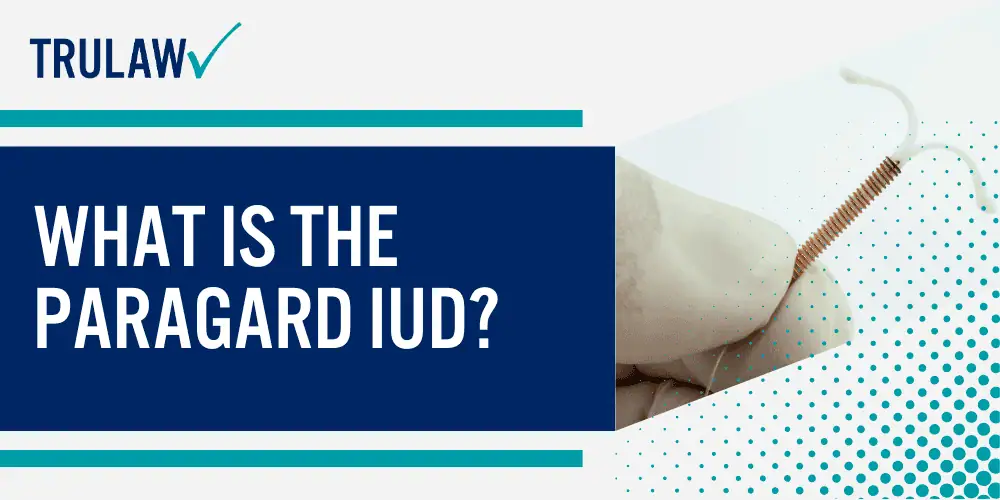
But, according to a Facebook group with more than 11,000 members, complications due to copper toxicity and breakage of the device happen more frequently than Teva warns women.
According to this Facebook page, the side effects of this medical product are not worth it – these prior users are warning other women, when it comes to Paragard – “Don’t get one”
Paragard Lawsuits Filed
Teva Pharmaceuticals USA Inc, the manufacturer of Paragard, is currently facing lawsuits alleging that it inadequately warned that its Paragard intrauterine contraceptive device could break during removal.
According to the Paragard lawsuit, the break during removal can lead to a painful removal surgery when the device ultimately embeds in the uterus.
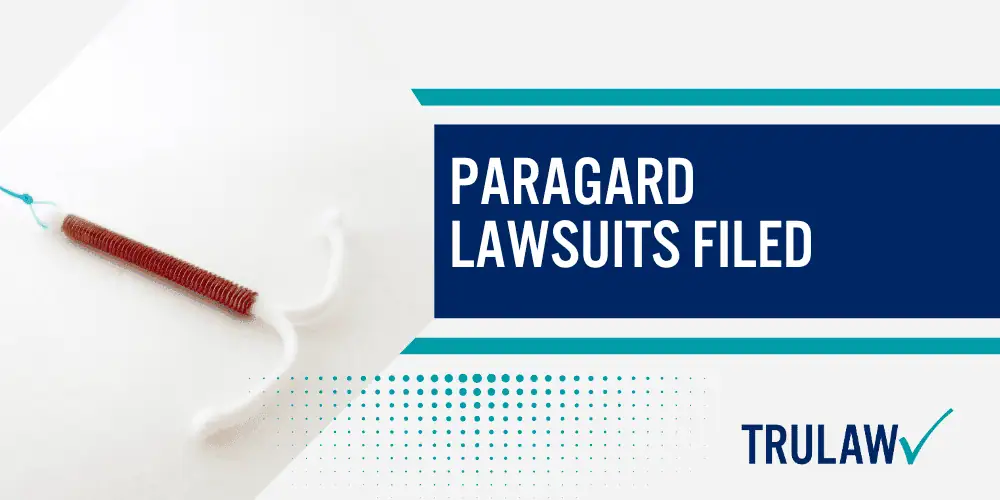
Paragard lawsuits allege that Teva put women at risk as a result of a defect in the device. Teva continues to risk our reproductive health by not warning women of this risk.
Was Teva Warned of the Risk of Paragard Complications?
According to Paragard lawsuits, Teva knew that Paragard can and does cause serious harm to individuals who use it through undetected breakage while implanted or breakage while being removed.
Further, Teva knew of the risk from the trials they performed and post-marketing experience and complaint but took no action to adequately warn women of these dangers.
In 2015, the Open Journal of Clinical & Medical Case Reports published a study of physicians within a three-year time frame in a single gynecological practice in Chicago.
This study found seven issues over the course of three years with all but one requiring hysteroscopic removal of the IUD’s arm. One 28-year old client was unable to completely remove the broken arm, despite the use of operating room procedures.
This Chicago study suggested that, while still rare, the complications from Paragard are under reported.
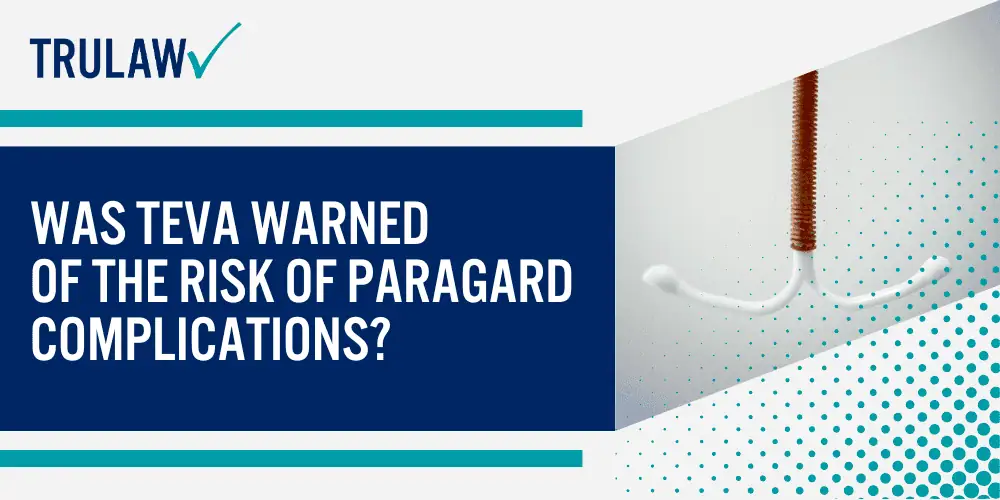
Furthermore, this study found that broken IUDs present a unique challenge to practitioners because the blind removal anticipated by the manufacturer is not possible.
Studies and real-life events shared on the Facebook page similarly show that even when women follow all of the proper procedures, attempts to remove the IUD intact by pulling the threads, can be unsuccessful and may result in serious side-effects.

Managing Attorney & Owner
With over 25 years of legal experience, Jessica Paluch-Hoerman is an Illinois lawyer, a CPA, and a mother of three. She spent the first decade of her career working as an international tax attorney at Deloitte.
In 2009, Jessie co-founded her own law firm with her husband – which has scaled to over 30 employees since its conception.
In 2016, Jessie founded TruLaw, which allows her to collaborate with attorneys and legal experts across the United States on a daily basis. This hypervaluable network of experts is what enables her to share the most reliable, accurate, and up-to-date legal information with our readers!
Here, at TruLaw, we’re committed to helping victims get the justice they deserve.
Alongside our partner law firms, we have successfully collected over $3 Billion in verdicts and settlements on behalf of injured individuals.
Would you like our help?
At TruLaw, we fiercely combat corporations that endanger individuals’ well-being. If you’ve suffered injuries and believe these well-funded entities should be held accountable, we’re here for you.
With TruLaw, you gain access to successful and seasoned lawyers who maximize your chances of success. Our lawyers invest in you—they do not receive a dime until your lawsuit reaches a successful resolution!
AFFF Lawsuit claims are being filed against manufacturers of aqueous film-forming foam (AFFF), commonly used in firefighting.
Claims allege that companies such as 3M, DuPont, and Tyco Fire Products failed to adequately warn users about the potential dangers of AFFF exposure — including increased risks of various cancers and diseases.
Depo Provera Lawsuit claims are being filed by individuals who allege they developed meningioma (a type of brain tumor) after receiving Depo-Provera birth control injections.
A 2024 study found that women using Depo-Provera for at least 1 year are five times more likely to develop meningioma brain tumors compared to those not using the drug.
Suboxone Tooth Decay Lawsuit claims are being filed against Indivior, the manufacturer of Suboxone, a medication used to treat opioid addiction.
Claims allege that Indivior failed to adequately warn users about the potential dangers of severe tooth decay and dental injuries associated with Suboxone’s sublingual film version.
Social Media Harm Lawsuits are being filed against social media companies for allegedly causing mental health issues in children and teens.
Claims allege that companies like Meta, Google, ByteDance, and Snap designed addictive platforms that led to anxiety, depression, and other mental health issues without adequately warning users or parents.
Transvaginal Mesh Lawsuits are being filed against manufacturers of transvaginal mesh products used to treat pelvic organ prolapse (POP) and stress urinary incontinence (SUI).
Claims allege that companies like Ethicon, C.R. Bard, and Boston Scientific failed to adequately warn about potential dangers — including erosion, pain, and infection.
Bair Hugger Warming Blanket Lawsuits involve claims against 3M — alleging their surgical warming blankets caused severe infections and complications (particularly in hip and knee replacement surgeries).
Plaintiffs claim 3M failed to warn about potential risks — despite knowing about increased risk of deep joint infections since 2011.
Baby Formula NEC Lawsuit claims are being filed against manufacturers of cow’s milk-based baby formula products.
Claims allege that companies like Abbott Laboratories (Similac) and Mead Johnson & Company (Enfamil) failed to warn about the increased risk of necrotizing enterocolitis (NEC) in premature infants.
Here, at TruLaw, we’re committed to helping victims get the justice they deserve.
Alongside our partner law firms, we have successfully collected over $3 Billion in verdicts and settlements on behalf of injured individuals.
Would you like our help?

